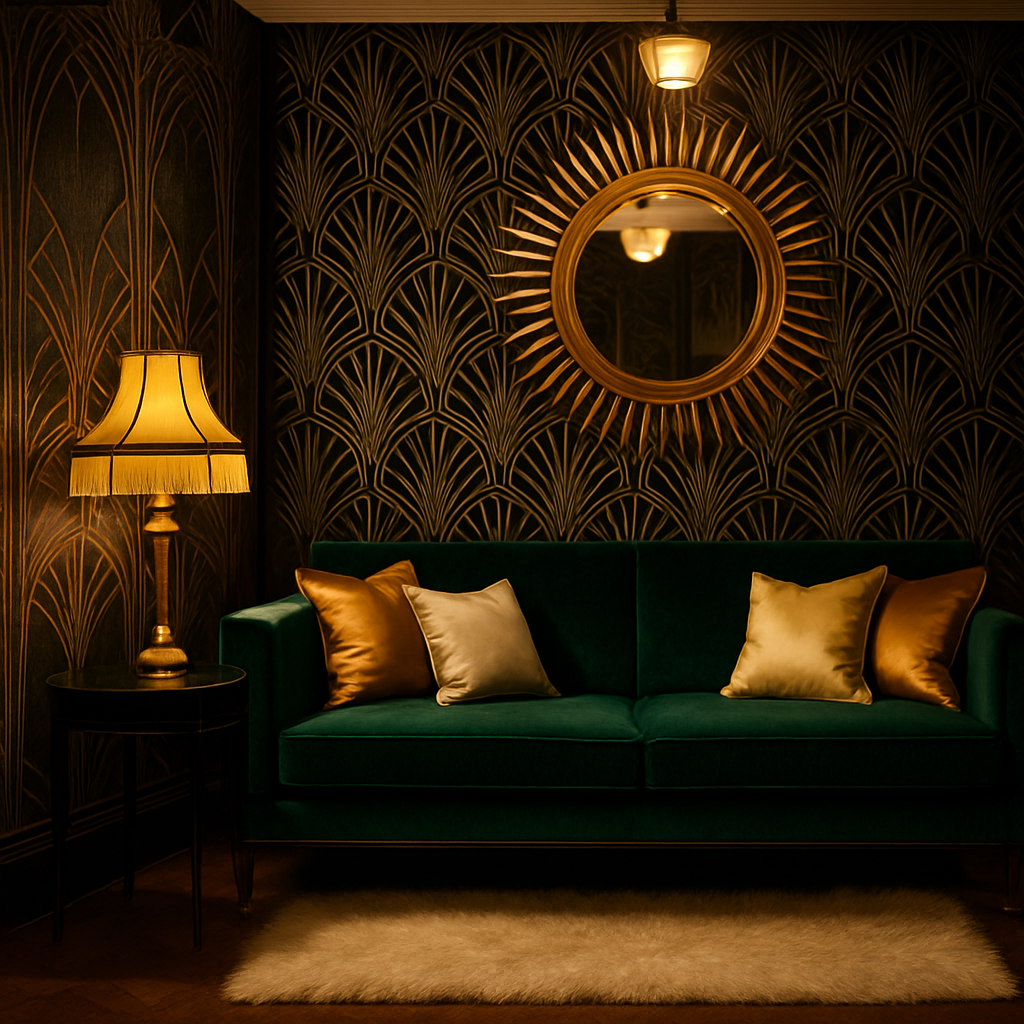
The idea of bringing back the Roaring Twenties in home decor has become quite the conversation starter lately. There’s something about that era the jazz, the flapper dresses, the speakeasies that feels both nostalgic and fresh. It’s like an old movie you can’t help but watch over and over again. The 1920s was a decade that knew how to make a statement, and with today’s design trends leaning towards boldness and a touch of glam, the timing seems just right to channel that Jazz Age spirit into our living spaces.
Let’s take a trip down memory lane, to a time when Art Deco wasn’t just a style but a lifestyle, when opulence was the name of the game, and minimalism was, well, not quite invented yet. The 1920s decor was all about striking contrasts, geometric patterns, and luxurious materials. Think rich velvets, metallics, and a whole lot of flair. But before you start imagining a living room that looks like Gatsby’s ballroom, let’s explore how this can be done tastefully, without feeling like you’ve stepped onto a movie set.
Art Deco Elements and Modern Twists
Art Deco was the crowning jewel of the 1920s, characterized by bold geometric shapes, lavish colors, and a certain unapologetic opulence. You’d find everything from sunburst motifs to chevron patterns, all executed with a precision that was a marvel of its time. Today, these elements can be reimagined in ways that feel contemporary yet timeless.
Imagine a plush, deep blue velvet sofa paired with a brass coffee table that features intricate geometric detailing. Or a striking black and white zigzag rug that anchors the room. You don’t need to transform your entire space into a 1920s museum; sometimes, it’s the little touches that make the biggest impact. A few well-chosen pieces can completely change the vibe of a room.
Let me share a little story from my own decor adventures. I once came across an old Art Deco mirror at a flea market. Its edges were chipped and the reflective surface slightly tarnished, but it had charm. I hung it in my hallway, and it instantly became a conversation piece. Guests would often pause to admire it, and it added a dash of character that no new piece could match.
But here’s the thing Art Deco isn’t just about the big, bold pieces. It’s about the subtle details, too. A pair of bookends shaped like vintage skyscrapers or a lamp with a frosted glass shade can bring in that Deco vibe without overwhelming your space. And let’s not forget the power of color. Rich, jewel tones think emerald greens, sapphire blues, and ruby reds can bring warmth and drama to any room.
Materials That Speak Volumes
If there’s one thing the Roaring Twenties knew how to do well, it was luxury. The materials from that era were all about indulgence. We’re talking about materials that begged to be touched silks, velvets, and satins. Then there’s the metalwork: chrome, silver, and gold that added sparkle and shine.
Incorporating these materials today doesn’t mean you have to break the bank. A simple velvet throw can add that touch of luxury to your sofa. Or consider a few metallic accents perhaps a gold-framed mirror or silver candlesticks on the mantel. It’s all about balance, like wearing just enough jewelry to make a statement without going overboard.
I remember visiting a friend’s newly renovated apartment. She had these stunning brass light fixtures that caught the light in the most beautiful way. It was like they were casting a warm, golden glow over the entire room. She told me they were a thrift store find, proving that a touch of glamour doesn’t have to come with a hefty price tag.
The Role of Lighting in Capturing the Era
Lighting isn’t just functional; it’s a mood setter. During the 1920s, lighting fixtures were often works of art. Stunning chandeliers, wall sconces, and table lamps played a big role in home decor. To bring this into a modern home, consider lighting that offers more than just illumination.
Look for pieces that have a sculptural quality, like a pendant light with a stained glass shade or a floor lamp with a sleek, curved design. These can add a sense of drama and elegance to any space. And don’t forget about dimmers. The ability to adjust the brightness can help create the perfect ambiance for any occasion, from a casual dinner to a lively cocktail party.
Once, during a trip to a vintage market, I found myself drawn to a small, artfully designed table lamp. It had a frosted glass globe and a brass base with intricate detailing. It wasn’t just a lamp; it was a piece of art. Placed in my reading nook, it transformed the space, casting soft, layered light that felt both intimate and inviting.
Bringing It All Together
Reviving the Roaring Twenties in modern home decor is about finding that sweet spot between old and new. It’s about creating spaces that feel lived-in yet luxurious, familiar yet daring. This isn’t about creating a period piece; it’s about capturing an essence, a feeling.
If you’re feeling adventurous, you could even throw a few unexpected elements into the mix. Maybe a contemporary piece of art with bold, abstract forms or a mid-century modern chair that adds a different era’s flair. It’s a bit like cooking sometimes the most surprising combinations lead to the most satisfying dishes.
The beauty of this style is its flexibility. You can go all out with a decadent, Gatsby-esque living room or simply sprinkle a few 1920s-inspired pieces throughout your home. The key is to stay true to what feels right for you. After all, home is where your personal style should shine brightest.
In the end, reviving the Roaring Twenties in home decor isn’t about looking backward; it’s about moving forward with a nod to the past. It’s about embracing the glamour and gaiety of an era that celebrated life and all its vibrant possibilities while making it work for today’s world. So, whether you’re sipping a martini by the light of a vintage chandelier or simply lounging on a velvet cushion, remember style, much like history, sometimes repeats itself for a reason.

